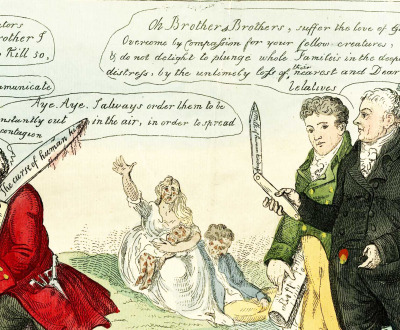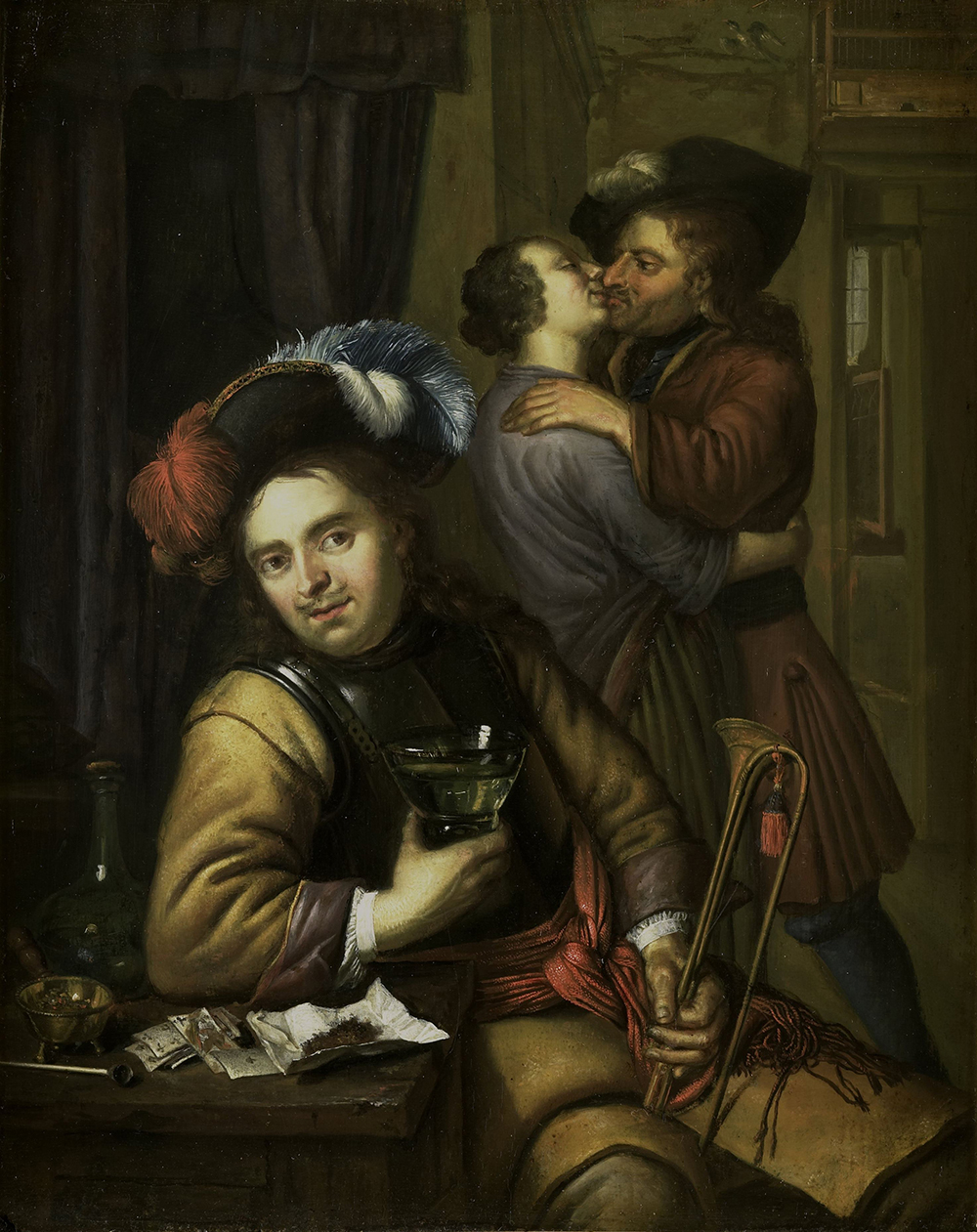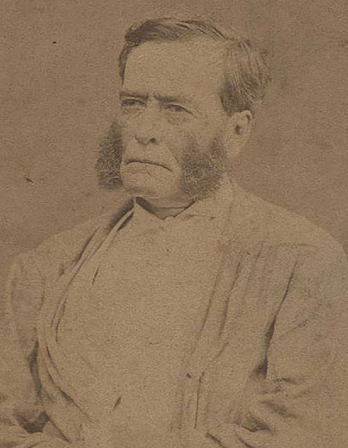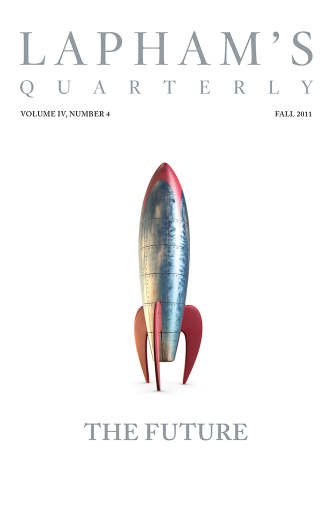Pushing someone toward liberty does not set her free; taking the chains off a prisoner does not give him freedom.
—Ken Bugul, 1982
Vaccination Against Smallpox, or Mercenary & Merciless Spreaders of Death & Devastation Driven Out of Society, by Isaac Cruikshank, 1808. © The Trustees of the British Museum.
On March 23, 1885, anti-vaccinators descended on the English city of Leicester to rally against the Vaccination Acts. Since 1853 these laws had mandated that all infants be vaccinated against smallpox. Parents who refused to comply were fined, imprisoned, or both. Between twenty thousand and a hundred thousand protesters came from all over Britain to join the march. The parade included parents who had served prison terms for noncompliance, a cart filled with unvaccinated children, an open hearse bearing a child’s coffin inscribed another victim of vaccination, doctors riding backward on cows, and an effigy of vaccine pioneer Edward Jenner that was eventually hanged and decapitated. Participants carried banners declaring pure blood and no adulteration and sanitation not vaccination. The crowd waved streamers as a brass band welcomed the procession to the town center. William Young, a pharmaceutical chemist and leader of one of Britain’s many anti-vaccination societies, proposed a resolution: “That the principle of the Compulsory Vaccination Acts is subversive of that personal liberty which is the birthright of every free-born Briton; they are destructive of parental rights, tyrannical and unjust in operation, and ought, therefore, to be resisted by every constitutional means.” After singing “Rule, Britannia!” and burning copies of the Vaccination Acts, the crowd peacefully dispersed.
The demands made by Britain’s earliest anti-vaccination movement led to important changes that made vaccines safer for everyone and forced the government to address valid complaints about unequal access to quality medical care. But the rhetoric of freedom and individualism that was central to this campaign also had significant effects. The pitting of personal rights against government compulsion continues to be a crucial tool in anti-vaccinationism’s arsenal more than a century later, depressing rates of vaccination and compromising public health.
Smallpox epidemics were a global phenomenon throughout the eighteenth and nineteenth centuries. The virus was highly contagious, and fatal in about 30 percent of cases. In its worst epidemic years, smallpox caused approximately a thousand deaths per million people in Britain. Survivors were often left blind, disabled, or scarred for life. The general superintendent of vaccination for the British colony of Madras warned that a victim of this frightening disease “becomes a mass of living corruption, so hideous that the mother sickens at the sight of her child and turns away.” Even if the child recovers, “it is so frightfully disfigured as scarcely to be recognized.” While smallpox trailed behind measles, scarlet fever, pertussis (whooping cough), and cholera among leading causes of death in the nineteenth century, it was the only epidemic disease that could be prevented through a medical technology.
Creating immunity by exposing the body to a mild case of disease has been practiced for centuries. Variolation—inserting smallpox under the skin or inhaling smallpox scabs through the nose to prevent a more virulent infection later—was customary across China, South Asia, Africa, and the Middle East in the eighteenth century. It was introduced to Britain in the 1720s by Lady Mary Wortley Montagu, wife of the British ambassador to the Ottoman Empire. What was new about vaccination was not the practice of inoculating against disease; rather, it was the substance used. An English country doctor named Edward Jenner observed that dairymaids and farmhands who had been exposed to cowpox never acquired smallpox and were resistant to variolation. His experiments with substituting cowpox for smallpox when inoculating his patients in the 1790s led him to develop the first vaccine (the word derives from the Latin for cow). Cowpox provided superior protection against smallpox, produced only a mild reaction, and could not be transmitted from person to person.
It was not yet understood that vaccination stimulates the immune system, training it to defend the body against future attacks of an invading organism. Nor was there a theory of herd immunity—that a well-vaccinated population left few hosts for a virus to infect, preventing its spread and protecting even the unvaccinated. But by the early 1800s, practical experience had demonstrated that high rates of vaccination in a community could curtail outbreaks of smallpox. So the British government began to offer it for free in 1840. Because the intention was to target poorer people—their bodies, homes, and neighborhoods were widely believed to be dirty, giving rise to disease—free vaccination was furnished through the new Poor Law of 1834, which provided medical services to the destitute. At the same time, the government outlawed variolation, fearing that the older practice risked spreading smallpox rather than containing it.
In 1853—disappointed that, as the epidemiologist Edward Seaton reported, the “lower and uneducated classes” had shown only “indolence and indifference” toward the free vaccination services—the British government introduced a vaccine mandate. Legislation passed in 1853 and strengthened in 1867 and 1871 required all infants to be vaccinated against smallpox by either a private medical practitioner or one of the state’s corps of free public vaccinators. Because the Poor Law had been providing free vaccination since 1840, it was more expedient for the government to continue this arrangement than to devise an entirely new bureaucracy. Public vaccination was offered at government workhouses and their infirmaries, sites that remained heavily stigmatized because of their association with pauperism. Setting up additional vaccination stations in schools, pubs, churches, and meeting halls did not rectify the problem; those compelled to use the public stations, wherever they were situated, often resented that, in the words of the editor of The Eclectic Journal and Medical Free Press, their children were “operated on indiscriminately with paupers,” who were entirely dependent on the government for their maintenance and thus the antithesis of the respectable British subject.
The vaccine mandate was rigorously enforced. Failure to comply resulted in a fine of up to one pound, more than many workingmen’s weekly wage. Those who could not pay the fine or refused to do so faced the seizure and auctioning of their household goods, a widespread practice that dated back to medieval forfeiture laws. If a child remained unvaccinated, a parent—generally the father—faced a prison term of up to two weeks. These penalties could be imposed repeatedly until the child was vaccinated or had reached the age of fourteen. This was the first time that the British government had mandated a medical procedure, and the East London Observer asserted that in doing so it had effectively deprived parents of their “civil rights and privileges as citizens of an otherwise free country.” An anti-vaccination movement formed in opposition to what many cast as a dangerous practice and a despotic policy.
Fears of the technology were not baseless, and vaccination was inherently more dangerous for poor and working-class children whose parents were obliged to use the state’s free services. In the nineteenth century public vaccination was invasive, unclean, and posed the risk of exposure to blood-borne diseases. Unlike immunization today, which relies on sterile, single-use hypodermic needles, public vaccinators used a small surgical knife or a spring-loaded scarification device to cut lines into the flesh in a scored pattern. Before germ theory significantly altered medical and surgical practices in the 1880s, these instruments were rarely sterile and not typically cleaned between procedures.
After making four or five incisions on an infant’s arm, public vaccinators took lymph directly from the pustules of a so-called stock baby, who had been vaccinated a week earlier, and smeared it into the cuts. (Becoming a stock baby was also compulsory: having received a free vaccination, selected infants were required to become incubators and suppliers of vaccine matter for future procedures.) When infants returned to households that lacked running water and proper toilet facilities, incisions could easily become infected. By contrast, middle- and upper-class parents generally paid to have the procedure performed by private practitioners. They could direct the vaccinator to make a single incision and to use vaccine lymph straight from a calf, which many felt was safer because it had not passed through other bodies. Wealthy parents might even circumvent the procedure altogether if their physician was willing to use a substitute as a placebo for cowpox, such as tartar emetic, a practice rumored to be widespread.
At a time when infant mortality was high—approximately 150 infants out of 1,000 live births died before their first birthday in the 1890s—parents feared exposing newborns to additional hazards. To avoid the risks that many feared vaccination posed, some parents sucked the vaccine out of their children’s arms. Others moved to a new district in the middle of the night, gave false addresses when they registered their children’s births, avoided birth registration altogether (after 1874 itself a crime), or practiced other means of evading vaccination officials. Dodging the authorities was difficult. One public vaccinator claimed to track defaulters “like a bloodhound on the murderer’s trail.”
While working-class parents often engaged in these forms of subterfuge independently, an organized anti-vaccination movement had also emerged by the 1860s. Over the next three decades, almost two hundred anti-vaccination leagues formed. Many were branches of larger organizations. William Young’s London Society for the Abolition of Compulsory Vaccination grew out of a mutual-protection society that he had established to help pay the fines of its working-class members. Young even wrote to the secretary of state on parents’ behalf, denouncing the “long and malicious prosecution” of “anti-vaccination martyrs” like Charles Hayward, a laborer who had been fined more than fifty pounds for noncompliance. The National Anti–Compulsory Vaccination League, run by Mary and William Hume-Rothery, attracted a different population: financially comfortable—and socially and politically powerful—middle-class liberals. While they rarely felt the full effects of the Vaccination Acts personally, these campaigners were committed to the principle of minimal government interference in private life. They sought to overturn the Vaccination Acts by lobbying Parliament and by seeking to elect anti-vaccination representatives. Before 1898, however, this strategy had only modest success and alienated working-class resisters who suffered the indignities and dangers of public vaccination firsthand, were much more likely to be prosecuted for noncompliance, and were even denied the right to vote until 1884.
In an age obsessed with Gothic horror, anti-vaccinators drew on the rhetoric and imagery of vampires and mad scientists to express their fears of bodily violation and physical pollution. Vaccination, they claimed, contaminated the body with animal products, transmitted syphilis and other blood-borne diseases, and rotted the flesh of “pure” British babies. Campaigners decried the use of stock babies, especially those whose family history of physical, mental, or moral health was suspect. This arm-to-arm method, the homeopath J.J. Garth Wilkinson claimed, “mingles in a communism of blood the taints of the community,” suggesting that not only diseases but character traits could be passed through the blood. This critique positioned babies as dangerous disease spreaders. But anti-vaccinators also maintained that children were the victims of science run amok. They warned parents about protecting their vulnerable infants from what Mary Hume-Rothery termed the “cutters and carvers” who, they claimed, were using babies as experimental material.
Advocates of vaccination condemned the campaign as lurid and sensationalist, yet even newspapers that did not support the anti-vaccination cause extensively covered the issue—the rhetoric made for good copy. But anti-vaccinators were not reliant on the mainstream press to reach either the public or the politicians they hoped to influence. They published their own journals, such as the Vaccination Inquirer, as a means to disseminate their views and communicate with one another. In an age when printing was cheap, they produced pamphlets and posters, some illustrated with horrific, attention-grabbing images. Anti-vaccination activist W.J. Furnival’s 1906 self-published album of “vaccination disasters” featured photographs of babies in coffins and an infant’s arm rotting out of its socket. In addition to making good use of the social media of their day, the leaders and paid spokespersons of the anti-vaccination leagues drummed up supporters and funding by speaking at events around the nation and at meetings overseas organized by their counterparts in Europe and North America.
The nineteenth-century anti-vaccination movement was as much political as medical; campaigners from across the class spectrum framed their resistance in terms of nationalism, individualism, bodily autonomy, and parental choice. Even if vaccination was the greatest of blessings, William Hume-Rothery posited, “the state would have no more right to [enforce it] than it would have to enact that every man should bathe himself regularly every morning.” The Vaccination Inquirer attacked compulsory vaccination as un-English and claimed to be fighting the “babies’ battle,” championing the civil liberties of individuals whose vulnerable bodies and personal rights, it argued, should not be violated by big government. Working-class anti-vaccinators in particular questioned whether they were not in fact “owners of their own persons” but instead merely slaves or livestock who were being marked by the government as if they were its property. “They might as well brand us,” argued one agitator in 1856.
Such language of individual freedoms and government overreach emerged almost immediately. In 1854, the year after the mandate took effect, the water-cure practitioner John Gibbs published Our Medical Liberties, a pamphlet denouncing compulsory vaccination as the “first direct aggression upon the person of the subject in medical matters” that had ever been attempted in Britain. The idea that mandating a medical intervention undermined individualism and represented unwarranted state interference in private life reflected the classical liberal ideology that dominated British political and economic thought in the mid-nineteenth century. Liberalism was central to the anti-vaccination movement. The London Society for the Abolition of Compulsory Vaccination argued that there should be “free trade in vaccination”: let those who want it get it, and “let those be free who don’t want it.” The government, anti-vaccinators claimed, should have no role in these decisions because it was a matter of personal choice. Any self-proclaimed liberal who does not recognize the right to refuse vaccination “is not a Liberal, he is a liar,” charged Alfred Milnes, a member of the National Liberal Club and editor of the Vaccination Inquirer.

Soldier Scene, by Carel de Moor, c. 1700. Rijksmuseum, S. van der Horst bequest, Haarlem.
Multiple administrations, both Liberal and Conservative, sidestepped the larger question of compulsion and countered resistance by insisting that vaccination had been proven to work even if the mechanism through which it provided immunity was poorly understood. Government officials routinely dodged anti-vaccinators’ political critique and merely denounced them as dangerous faddists, anti-scientific fanatics, and negligent or even cruel parents. Much of the medical profession agreed with a Lancet correspondent who dismissed the arguments of anti-vaccinators as “puerile and contemptible.” These attempts to belittle anti-vaccinators rather than engage with their concerns backfired. The movement kept growing, and its message became more coherent. In working-class neighborhoods of London’s East End, the vaccination rate was only 43 percent in 1896 because of pronounced opposition. That year a range of societies devoted to the cause formed the National Anti-Vaccination League, combining their funds and efforts to uphold what one correspondent to the Vaccination Inquirer called the “working man’s right to call his body his own.”
The organized movement had been strategically supporting political candidates since the 1870s, and it finally paid off. The results of an 1898 election in the city of Reading, held to replace a Conservative member of Parliament who had died in office, eventually stimulated the government to act. The Liberal candidate, a political newcomer who had pledged his support for the anti-vaccination cause in exchange for the movement’s backing, won by the largest majority in the district’s history. This unexpected outcome—coupled with the fact that suffrage had expanded to include most working-class men after 1884—triggered the Conservative administration to address the persistent complaints of anti-vaccinators. In 1898 Parliament capitulated on the issues that had proved most contentious, passing legislation that replaced public vaccination stations with home visits and the arm-to-arm method with sterilized calf lymph. The government also capped the number of penalties that could be imposed on objecting parents.
The most important concession was the introduction of exemptions to the mandate, made possible in 1898 through a “conscience clause.” Throughout the campaign anti-vaccinators had drawn on legal precedents in their struggle for the “liberty of conscience.” The 1689 Toleration Act had enabled Protestant dissenters to “affirm” rather than to “swear” an oath on the Church of England’s Bible in legal proceedings. In 1888 this right was extended to atheists and members of other religions. The 1757 Militia Act had similarly exempted Quakers from supplying property for military use because of their religious pacifism. The Elementary Education Act of 1870 allowed children whose families were not Anglican to abstain from prayers and religious teaching within the new state school system. Using these precedents, anti-vaccinators successfully argued that citizens should also be able to conscientiously object to other state policies. This allowance would have enormous implications when conscription was introduced in the middle of World War I, with conscientious objection to vaccination providing the blueprint for conscientious objection to military service.
Beginning in 1898 parents seeking an exemption were obliged to appear before a magistrate, pay a court fee, and provide satisfactory evidence that they did “conscientiously believe that vaccination would be prejudicial to the health of the child” in question. The government required this process to be completed within four months of the child’s birth to prevent parents from circumventing the penalties for noncompliance by later claiming conscientious objection. Significantly, the conscience clause did not allow parents to object merely to the principle of compulsion and thus to refuse to vaccinate their children as a form of resistance to the mandate. The objection had to be a deeply held belief that vaccination posed health risks, even if this belief was not “reasonably founded.”
Because applicants for exemptions had to satisfy a magistrate of their sincerity, the process of granting certificates was uneven. Magistrates were permitted, even required, to cross-examine applicants to determine whether their beliefs were “conscientious.” Since there was no statutory definition of what made an objection to vaccination conscientious—one justice complained that there were no X-ray devices to make the conscience visible—magistrates had considerable leeway. Some refused to hear any cases at all, believing that they could never be satisfied; at least one magistrate proclaimed to have a conscientious objection to giving out certificates of conscientious objection. But others granted certificates to all who applied, without even the pretense of evaluating the nature of the objection.
Magistrates were invariably elite white men, while applicants were generally working-class. Many objectors were women, and in some of Britain’s port cities they may have been non-white or mixed-race. Judges often raised doubts about whether those seeking exemptions were educated enough to have a conscience in the first place. A father who was denied a certificate openly challenged the magistrate hearing his case: “That means that you say my conscience is nothing?” “Well,” replied the magistrate, “not in vaccination.”
Applicants often left empty-handed after paying travel expenses and losing a day’s wages for the privilege. They felt bullied, ridiculed, and humiliated. In some districts women were routinely turned away and told to send their husbands in their place. Although the 1898 law used the word parent, the government’s legal advisers maintained that because British law designated the father the legal guardian of his child, only he could apply for a certificate of conscientious objection.

Armida Binding the Sleeping Rinaldo with Flowers (detail), by Willem van Mieris, 1709. Mauritshuis, The Hague.
Anti-vaccinators charged that in practice the 1898 legislation undermined the basic civil right to equal treatment under the law: according to the Liberal politician Arnold Lupton, it “gives exemption to the rich”—who could afford the time and money necessary to procure an exemption and were rarely rejected—“and denies it to the poor.” The movement attempted to use the letter of the law to its advantage by producing pamphlets that schooled exemption seekers on how to state their case, encouraging them to use the language of conscientious objection. This strategy could backfire—at least one magistrate turned away anyone he perceived as having been coached, reasoning that the objection could not be sincere if it parroted the words of another. Anti-vaccinators able to shoulder the costs might travel hundreds of miles in search of sympathetic magistrates. One popular destination was Oldham, an industrial town outside Manchester where anti-vaccinationism found a natural home among working-class mutual-aid movements such as trade unionism, cooperative stores, friendly societies, and the campaign for universal male suffrage—precisely because it, too, underscored social, political, and economic disparities. Magistrates there held mass hearings, approving hundreds of applicants at a time. While Oldham’s own anti-vaccination society took a harder line, arguing that it was a “retrograde and humiliating step to seek by purchase of certificate exemption from an oppression we have already cast off,” the town’s magistrates issued approximately forty thousand certificates by the end of 1898. In other anti-vaccination strongholds almost half of all births were regularly being issued certificates of exemption by 1905.
According to a legal manual, the 1898 law had been intended as a “truce and an armistice.” But both anti-vaccinators and the government were displeased with the implementation of exemptions, which spurred politicians to introduce new legislation in 1907. It stipulated that parents—now explicitly including mothers, after much debate—would be granted certificates of exemption upon making a statutory declaration, without being questioned or refused. In the immediate aftermath of the legislation, approximately 20 percent of infants received exemptions. Although committed anti-vaccinators continued to protest the Vaccination Acts on principle, after 1907 the anti-vaccination movement precipitously declined. The new conscience clause effectively defanged the vaccine mandate by providing a durable compromise: it made opting in to what was still considered a significant public health measure the default while upholding the individual’s right to medical liberty. The Vaccination Acts were formally repealed by the National Health Service Acts of 1946 and 1947, which introduced what was intended to be a non-stigmatizing system of medical care for all. By this time the smallpox vaccination rate had dropped to approximately 42 percent, with about 34 percent of infants granted conscientious objections. An additional 4 percent died before they could be vaccinated or proved insusceptible to the procedure. But the remaining 20 percent were unaccounted for, having fallen between the cracks of a largely defunct system of compulsory vaccination.
The National Anti-Vaccination League remained in operation through the mid-1970s, with a membership of around a thousand. In this later period it attracted not only vegetarians, practitioners of yoga, and antifluoridationists but also those with extreme right-wing views. After receiving a large donation from a Mrs. Howey, it was subsumed within a foundation concerned with environmental issues such as air pollution, which in turn folded in 1982. Although no other vaccines were ever mandated for the entire population, anti-vaccinationism reemerged in Britain in the 1990s in response to fraudulent claims that the combined vaccine for measles, mumps, and rubella was linked to autism and as part of a wider parenting trend favoring organic food and naturopathy. But this period was characterized more by vaccine hesitancy than by outright resistance to either the medical intervention itself or the government’s role in providing it. Ironically, this hesitancy was a product of the success of vaccine technology. Vaccination was a key factor in the eradication of smallpox, and this first immunization paved the way for others that eventually prevented a range of deadly diseases. This has meant that fears of rare vaccine side effects loom larger in some parents’ imagination than their fears of the real dangers posed by epidemic diseases themselves.
In the age of Covid-19, concerns about the safety of vaccines and the ethics of government mandates have once again raised questions about the politics of vaccination and what we mean by medical liberty. The nineteenth-century anti-vaccination movement articulated widespread anxieties about both bodily integrity and the appropriate role of government in society. It led to changes that made vaccination safer and more convenient. These developments bolstered trust in vaccination, which has proved to be one of the most important medical innovations of all time. The infant mortality rate in Britain today is 3.4 deaths per 1,000 live births. This is largely because epidemic diseases such as measles, diphtheria, pertussis, and rubella—all of which killed many children in the nineteenth century—are now preventable. The long history of vaccination and its opposition has taught us that the benefits of vaccines, which have become extremely safe, far outweigh the risks. But it also suggests that attending to the concerns of the targets and beneficiaries of public health initiatives is vital to the success of any policy to contain communicable diseases—which will always be with us, precisely because germs do not recognize the individual’s right to bodily autonomy.



